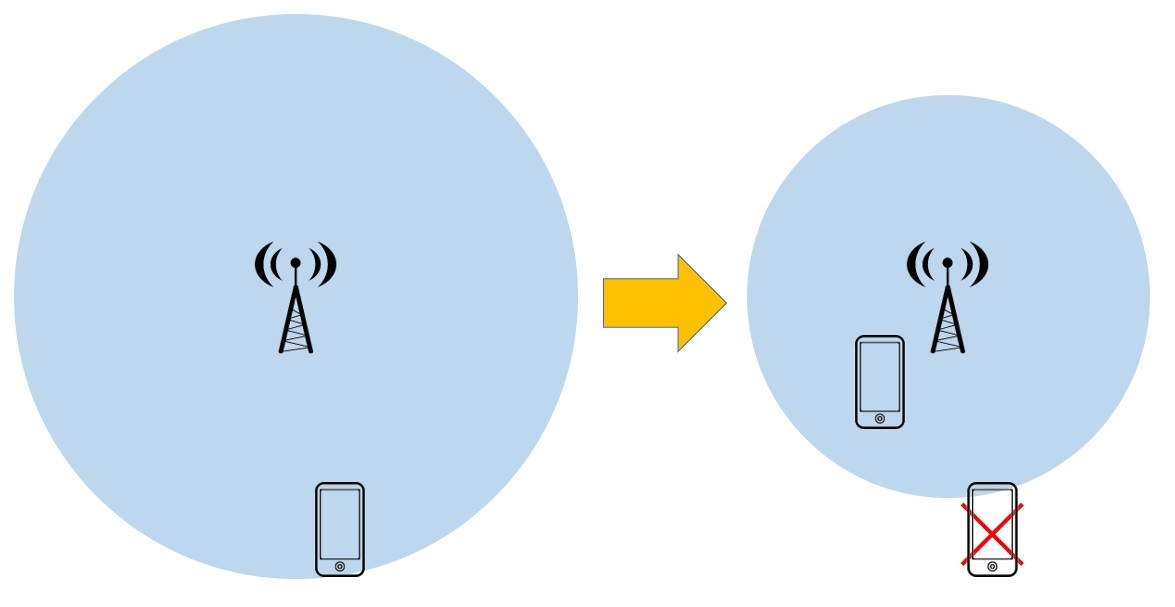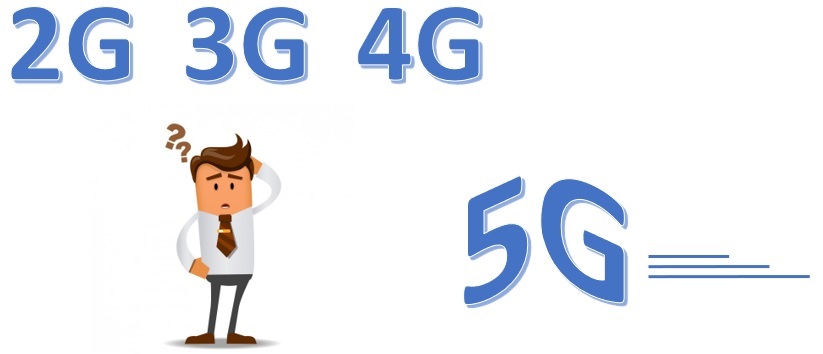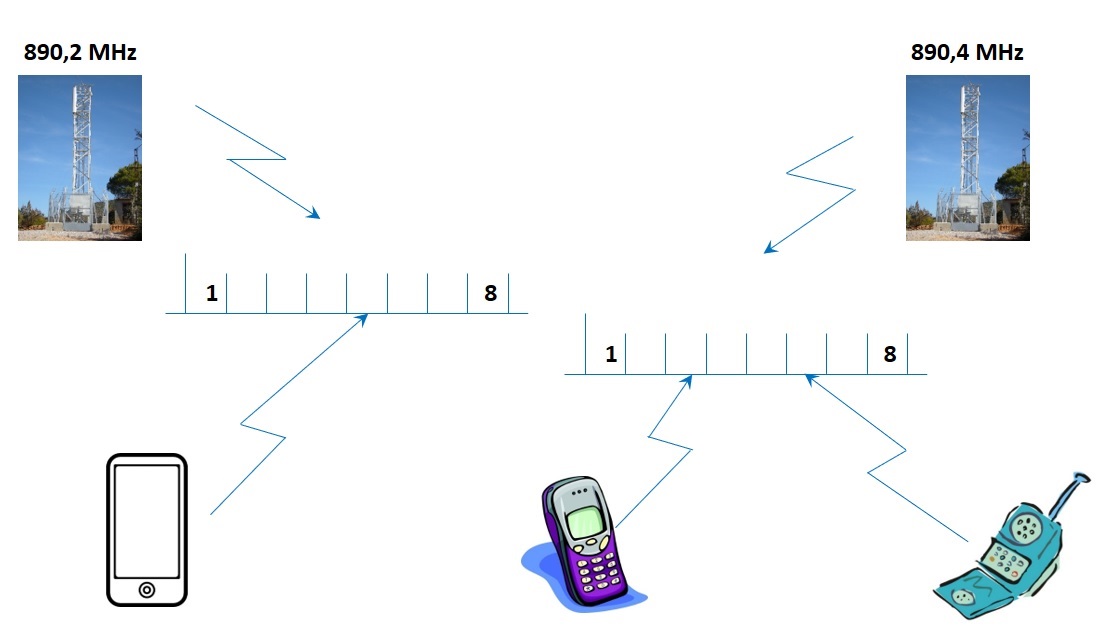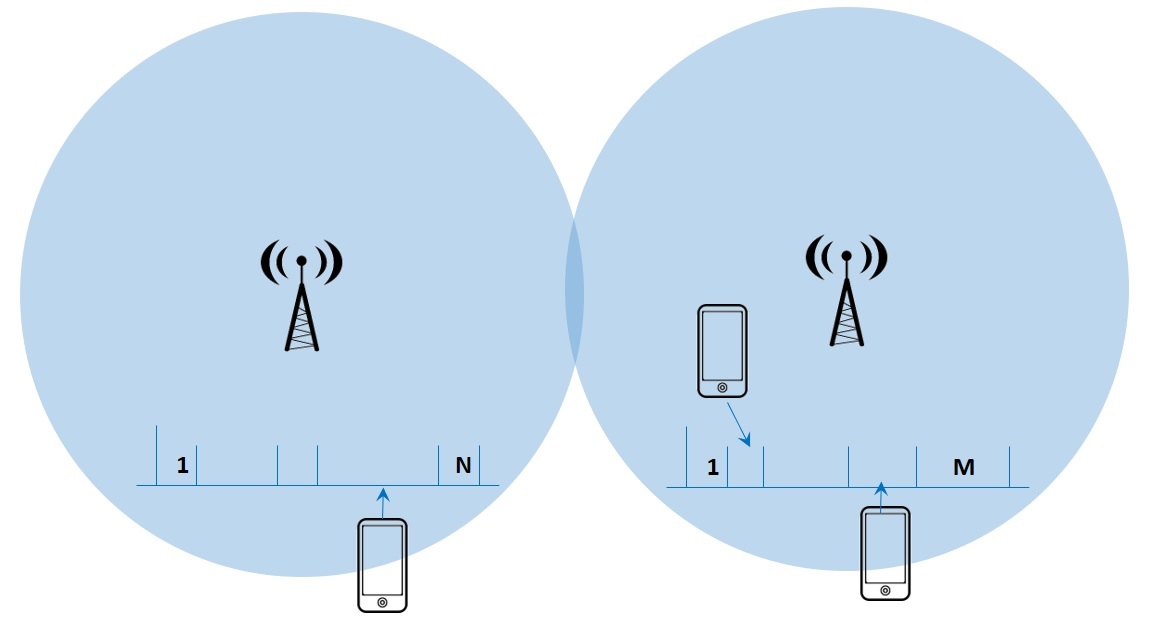In any other technology new versions use to retire older ones. It is true previous versions use to be supported for compatibility reasons with older equipments. But, in technology, older equipments use to be in a drawer or in the garbage. Additionally, in case of a radical change, compatibility with older version use to last short time.
In the opposite, in mobile network technology, all generations are more present than ever and nobody think about retiring anyone. The reason is every mobile generation is completely different to the rest and, in some cases, the newer generation is worst than the previous one.
In this post we will try to understand why, currently, all mobile generations are necessary.
GSM or 2G
We won’t explain in detail every technology but focus in main characteristics in order to understand every technology at high level.
Every assigned band (850 MHz, 900 MHz, 1800 MHz or 1900 MHz) includes a set of frequencies called radio channels. There is 200 KHz one radio channel and the contiguous one. Every radio channel is organized in 8 timeslots (time assigned to every device) assigning 25 KHz to every device which could be use for voice or low capacity data connection (9600 Bit/S).
Every antenna use one or several radio channels depending on necessary capacity. Two contiguous antennas use different radio channels in order to not interfering each one. High frequency bands (1800 MHz y 1900 MHz) have double number of radio channels but this additional capacity is only necessary in airports, stations or stadiums. Most number of antennas use only radio channels in low-frequency bands (850 MHz y 900 MHz) as they have enough capacity (considering number of connections, not considering data speed) and best coverage.
Single antenna coverage could be up to 35 Km in good conditions like in the coast or plain places. But coverage is limited to this value because, due to the time spend by radio waves, one device could interfere the device in the contiguous timeslot. GSM antennas don’t allow connection of devices further than 35 Km.
GPRS and EDGE
Both technologies increase data connection speed using several timeslots for the same device (GPRS) and QAM modulation (Edge). Anyway both technologies use maximum one radio channel or 200 KHz. GPRS and EDGE development is currently minimum and the focus is in newer generations.
UMTS or 3G
UMTS technology is totally different from GSM. Any operator could use from 1 to 4 bands with 5 MHz capacity each one. This 5 MHz are shared between all devices connected to one antenna in this band. Because of most devices are not continuously transmitting one device could use the whole 5 MHz band. Voice connections rest few capacity to this 5 MHz. Then UMTS are multiplying capacity by 25 from 200 KHz to 5 MHz. Then, what is the problem?
The problem is two contiguous antennas could use the same band. Assigned bands to an operator are from 1 to 4 but every antenna use all bands assigned to the operator. All antennas use the same frequencies. In order to reduce interferences power control is mandatory both in antennas and devices adjusting power dynamically depending on antennas and devices around.
 Reduce power means less coverage. Additionally this coverage is dynamic and depends on device behaviour. One UMTS antenna could give coverage up to 80 Km but it has to reduce power when there is a device nearby retiring coverage to further devices. Dynamic coverage is the main pain point of UMTS and the reason because GSM is already necessary with its bigger and stable coverage.
Reduce power means less coverage. Additionally this coverage is dynamic and depends on device behaviour. One UMTS antenna could give coverage up to 80 Km but it has to reduce power when there is a device nearby retiring coverage to further devices. Dynamic coverage is the main pain point of UMTS and the reason because GSM is already necessary with its bigger and stable coverage.
LTE or 4G
LTE maintain common band functionality but the bands could be 5, 10, 15 or 20 MHz wide. In order to solve dynamic coverage problem come back to use timeslots. These timeslots are not fixed like GSM but variable time and number of them depending on connected devices. Power control to avoid interferences is necessary as well but only depending on nearby antennas, there is no device to device interferences thanks to timeslots. As antennas are not moving at all coverage is stable. One antenna without any other nearby could transmit at maximum power anytime.
Then it appears we have the right technology, any problem? Yes, there is no voice calls in LTE. For making voice calls devices could change to older technologies in an operation called CSFB (Circuit Switching Fall Back) switching to 2G or 3G during the call. Obviously we can not retire both 2G or 3G.
Hopes are in VoIP or VoLTE technology which use a data connection for voice calls. This technology is similar to Skype or WhatsApp voice calls. Currently most people are using these two applications for voice calls instead of VoLTE provided by operator.
If finally voice calls over data connections are successfully 2G and 3G will be finally switched off gradually. Currently mobile network operators are considering to switch off 3G technology. For voice calls (the most important service) there is nothing but 2G and, for data connections, there is nothing but 4G.
And, what about 5G?
We should consider 5G as a 4G evolution. 5G will include new frequencies and modulations but it maintains same band for all antennas and timeslots to eliminate device to device interferences. There is no voice connections in 5G and VoIP is necessary as well. 5G is more a commercial topic than a real necessity of a radical change.









